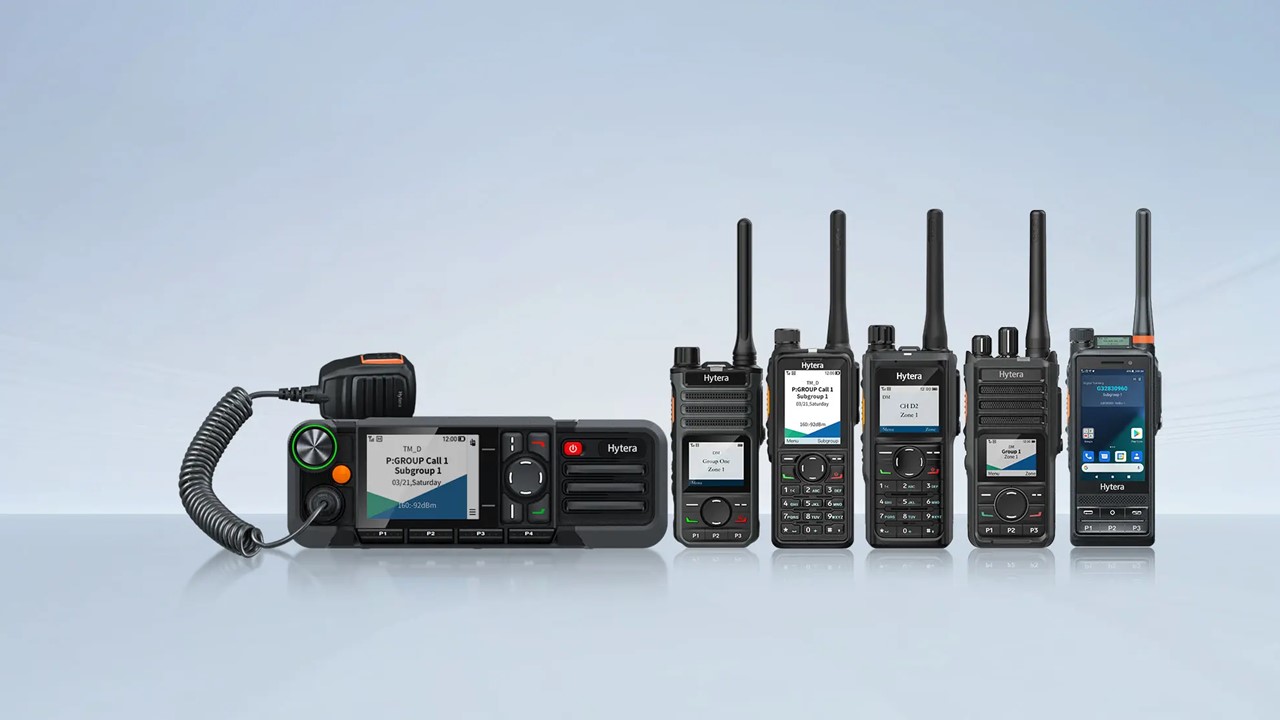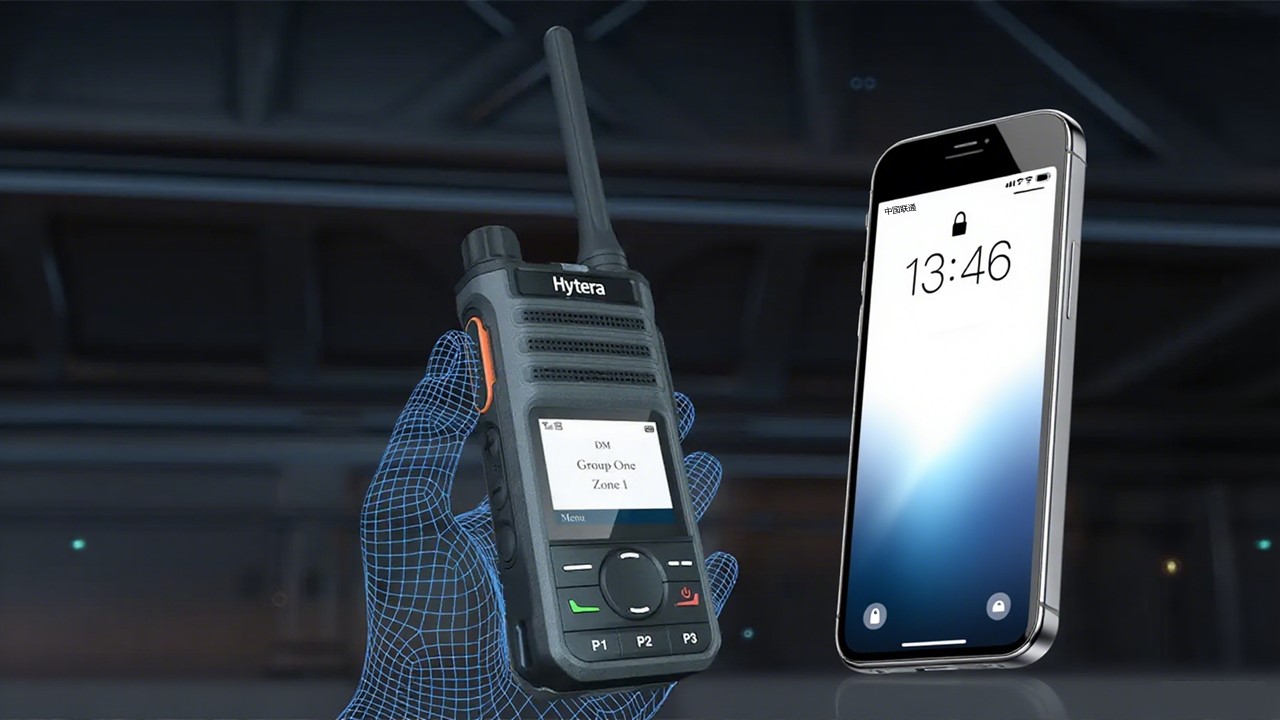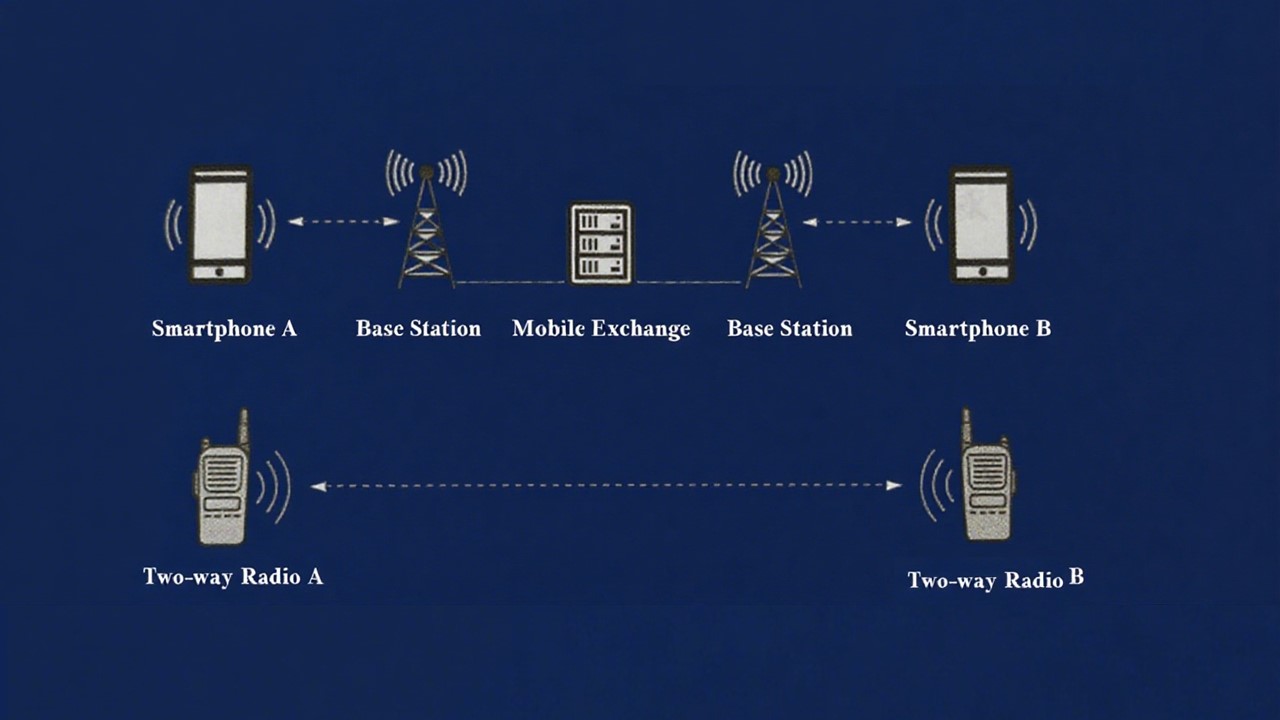Walkie-Talkies 101: Your Ultimate Guide to Two-Way Radios (Updated)
Walkie Talkies
You're here probably because you're thinking about buying a walkie talkie or handy talkie, or maybe you're just curious and want a full review about two way radio.
I've been working at Hytera, a top communication solutions company. I've learned courses, worked closely with engineers and sales teams, and learned exactly what customers care about when it comes to walkie talkies.
Most I've seen online is either too partial or misses the point. That's why I decided to put this guide together and I keep it updated. Have a question I didn't cover? Message me on LinkedIn.
This guide is perfect if you are new or you look for a complete guide. If you already targeted to long range two way radios. This blog might be a bit too basic for you. Take your time, read through it, and get the facts you need to get the best walkie talkie or cool walkie talkies for you.
Here's what you'll find in this blog:
- What is a walkie talkie?
- What is a two-way radio?
- Walkie talkie vs. two-way radio
- Walkie talkie vs. smartphones?
- How do walkie talkies work?
- VHF vs. UHF
- How far can they really reach?
- Can different brands talk to each other?
- Battery and safety tips
- What are different types of two-way radios
- Tips for buying

Differences between walkie talkies and smartphones?

When people hear “walkie talkies,” they often think about smartphones. it makes sense as phones are with tons of functions, wide signal coverage, and are super easy to carry. They've become a must-have tool in daily life.
Actually walkie talkies have longer history than smartphones. They were firstly developed in the 1930s and quickly became an essential tool for military communication during World War II. In the broader history of radio communication, methods like Morse code were also widely used for sending encoded messages.
A big difference between smartphones and walkie talkies is whether a network is needed. Smartphones go to the nearest base station, then through a telephone exchange, and finally connects to the person you're calling. Walkie talkis don't always rely on cell signals(PoC radio excluded). You just press the PTT (push-to-talk) button and talk instantly. No dialing, no waiting, no network needed. And since walkie talkies don't rely on call charges or traffic package, they're free to use, making them perfect for one-to-one and one-to-all calls.

What is a walkie talkie?
What is a two-way radio?
Two-way radios are built to be tougher and more flexible. They often come with higher power output, longer range, programmable channels, and work well in harsh environments. So they are best for professional, industrial, or mission-critical communication.
Walkie talkie vs. two-way radio
After reviewing a lot of materials and talking with our engineers, I've put together a list of difference between walkie talkies and two-way radios. For this blog, though, I'll use both terms without making a distinction.
| Feature | Walkie Talkies | Two-Way Radio |
|---|---|---|
| Lisence | Typically License-Free | Typically require Licensing |
| Design | Handheld, easy to carry | Some are larger e.g.vehicle-mounted radio with requirement of external power and antennas |
| Frequency | Typically should be as the same frequency | Can be different frequency if with the repeater |
| Range | Short range(eg. Less than 1 mile) |
long range (eg. In or more than 1-2 miles) ; using repeater stations to boost range; PoC radio (with SIM card) can go worldwide range |
| Power | AA or AAA batteries, offering shorter battery life; 0.5W | Mobile units (e.g.,vehicle-mounted radio) have higher power (e.g., 25W, even 50W+) |
| Function | Basic push-to-talk functionality | Better audio quality, encryption, GPS tracking, text messaging, noise cancellation, and group calls |
| Cost | Generally less expensive | More expensive |
| Scenerio | Open areas for personal usage,outdoor activities like camping and hiking, family trips or small business operations | Public safety, emergency response, and oil and gas sectors,construction,and logistics industries,security, etc. |
Can different brands talk with each other?
If you enjoy hiking or outdoor adventures, a common question is:"Do I need to buy the same brand of walkie talkie as my friends?" My answer is "no".
Different brands can communicate, but only if their settings match precisely.
Generally, digital radios and analog radios cannot talk to each other. They use completely different methods to transmit a signal.
For analog radios, they must be:
- On the same frequency band (e.g., both UHF or both VHF).
- Programmed to the exact same frequency.
- Set to the same CTCSS or DCS privacy code (or both set to 'no code').
For digital radios, the requirements are stricter. They must have all of the above plus using the same digital protocol (e.g., both DMR, both TETRA, etc.). A digital radio cannot understand an analog signal and vice versa.
That is, getting different walkie talkies to talk to each other isn't about brand names. What matters is that their core settings match: the frequency, the CTCSS/DCS code (if used), and being on the same band (UHF/VHF) and mode (analog/digital). If these technical settings match, you can easily talk with with different radios.
How do walkie talkies work?
Once the radios are set up, using them is simple. Just press and hold the Push-to-Talk (PTT) button to speak, then release it to listen. Some radios, like Hytera's S1, even have dual PTT buttons to make operation more flexible.
13Using standard walkie talkies lingo and codes can help streamline communication and avoid misunderstandings. Some common codes include:
10-4: Message received
Roger: Message understood
Over: End of transmission, waiting for a reply
Out: End of transmission, no reply needed
How far can walkie talkies reach?
The answer depends on what radio you use and how you use it. Let's explore from four conditions: standard use, with repeater, with trunking system, using poc radios.
Standard use: In open areas, personal walkie talkies often range around 4 miles. In cities or densely populated areas, the range typically drops to around 1-2 miles due to buildings and other structures interfering with the signal.
With repeater+Specific antenna: One and more repeaters with specific antenna can boost and strength the signals ,allowing walkie talkies coverage 3-5 times greater than normal. If the repeater is placed in a high, open location, communication distances of 20-30 miles may even be possible.
Using PoC radio: Nationwide range? Push-to-Talk Over Cellular (PoC) radios with SIM card inserted can go nationwide coverage, making 5000 miles connection not a problem. As long as you are within a cellular network, you are connected. Instant talk between South Africa and China is not a dream.
That's why you rarely see range information explained from manuals. The range depends on the device itself, like transmitter power, antenna quality, and frequency band, but it's also strongly influenced by the environment. Mountains, buildings, trees, weather like rain or fog, and interference all reduce range. Length, gain, and frequency compatibility of Antenna matters. The operating mode—whether direct (simplex) or through repeaters (trunking)—also makes a big difference in how far the signal can travel. Here let's look at how two major technical factors of frequency band and transmitter power.
Frequency bands first. They are divided into channels. Two-way radio frequencies mainly include VHF (Very High Frequency) and UHF (Ultra High Frequency):
VHF (Very High Frequency, 30-300 MHz): Better for open, outdoor areas where it can achieve longer range.
UHF (Ultra High Frequency, 300-3000 MHz): Better at penetrating buildings, walls, and other obstacles, making it the superior choice for use in cities, indoors, or in wooded areas.
This difference is due to the physical properties of their wavelengths. Remember, radios must be on the same band to communicate—a VHF radio cannot talk to a UHF radio.
As for transmitter power, in free space with no obstacles or noise, a 0.5W radio might reach about 1900miles, a 2W radio about 3800 miles, a 5W radio around 6000 miles. Though it's theoretical, it surprises me a lot. No to say in real-world, the results will be too much different. Above data is from below table of ideal maximum communication distance of walkie talkies with different transmission powers in free space.
| Transmitter power / W | Maximum communication distance / Miles |
|---|---|
| 0.001 |
86 |
| 0.01 | 270 |
| 0.1 | 856 |
| 0.5 | 1911 |
| 1 | 2703 |
| 2 | 3819 |
| 5 | 6045 |
Battery and security tips
The main reason why we need to remove walkie talkie batteries before a flight is the risk of a short circuit and walkie talkie explosion risk.
If the battery terminals touch something conductive—like keys, jewelry, or other metal objects in your bag—it can complete a circuit, causing the battery to overheat rapidly, causing walkie talkie explosion or a fire. To prevent this, always remove the battery when flying or storing your device under the guidelines of aircraft crew.
Also ensure your walkie talkies are well-maintained and maximize device battery life in daily life. Walkie talkies with fully charged batteries and clean antennas will help avoid signal loss.
Always remember walkie talkies are not private. Anyone on the same frequency can listen in. It's best to avoid sharing sensitive information like your exact location, or personal details. You never want these heard by wrong persons.
What are the Different Types of Two-Way Radios
Talking about types, I have to mention Family Radio Service (FRS) radios and General Mobile Radio Service (GMRS) radios, two popular types of radios. FRS radio is ideal for short-range communication and doesn't require a license, while GMRS radio offers longer range and requires a license from the FCC.
Actually there are many ways to group radios. For example, by usage: handheld radios or vehicle-mounted mobile radios. By working frequency: single-frequency, dual-frequency, or multi-frequency. By signal type: analog or digital. And by application: civilian or military radios.
Since walkie talkies are a type of radio communication equipment, subject to radio management rules in production, sale, and use.Thus, radios are often divided into public walkie talkies, PoC (Push-to-Talk over Cellular) radios, amateur radios, and professional radios.
| Type | Public Two-way radio | PoC radio | Amateur radios | Prefessional radios |
|---|---|---|---|---|
| Operation Certification | No | No | Need | No |
| Radio License | No | No | Need | Need |
| Frequency Occupation Cost | No | No | No | Need |
Public (License-Free) Walkie Talkies
License-free walkie talkies are great for casual use. They're usually compact, with fixed antennas and a basic interface. Best for hiking, or short-range chatting—no license required and easy to use.
PoC Radios (Push-to-Talk over Cellular)
PoC radios use cellular or Wi-Fi networks instead of traditional radio frequencies. You just insert a SIM card and you talk anywhere nationwidely. They often include GPS, messaging, and group calling. PoC is perfect for businesses with teams all over the world.
Amateur Radios
Seriously the world of amateur radio is far from "amateur" we usually think. It requires both operation certification of operator and radio license of the radio. Made for hobbyists and certified “ham” operators to operate wide range of channels and long-distance communication. Ham radio frequencies are for non-commercial communication.
Professional Radios
Professional radios are reliable and durable under pressure. For example, Public safety and emergency radio frequencies ensure encrypted communication. They are best for law enforcement, fire departments, and other emergency services.
Here are videos I found interesting. See how technical test of poc radio:
and how people test the poc radio in real-world trials:
Today, radios are evolving and integrating with other specialized devices. One example is the Hytera body camera. While primarily a digital evidence recorder, it integrates with PTT voice communication function.
7Two Things to Consider Before Buying for Personal Use
Walkie Talkies Type
Public (license-free) radios are the easiest option. You can use them straight away without paperwork. Amateur radios, however, require you to pass a certification test. These are more advanced, with lots of features for hobbyists.
So, if you just want something simple, go with public radios. If you're curious and willing to learn, amateur radios could be your choice.
Functions
Think about how and where you'll use it. Different environments call for different features.For parks chatting, a basic talk function is enough. If you're hiking, camping, or traveling, look for radios with dust and water protection.
Remember that the more features a walkie talkie has, the higher the price tends to be. So balance what you need with what's nice to have.






